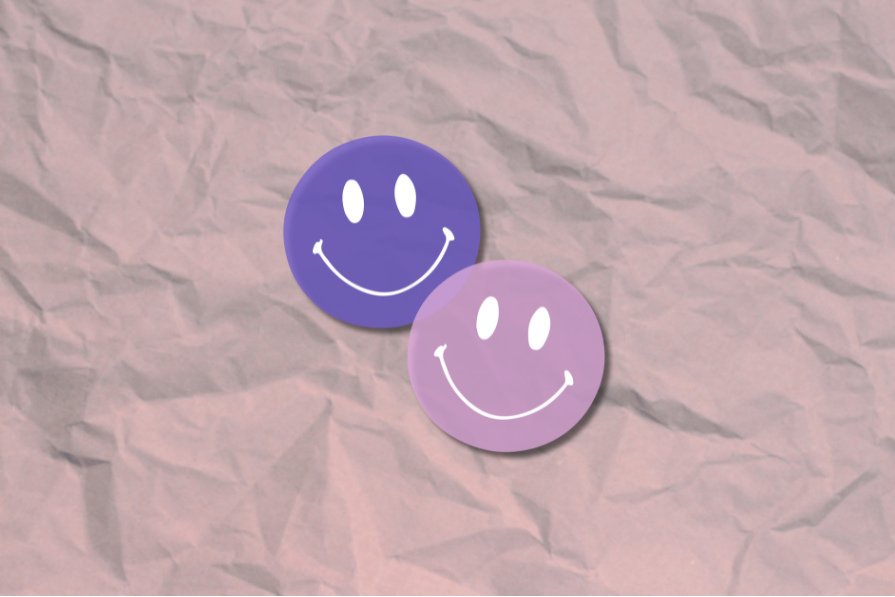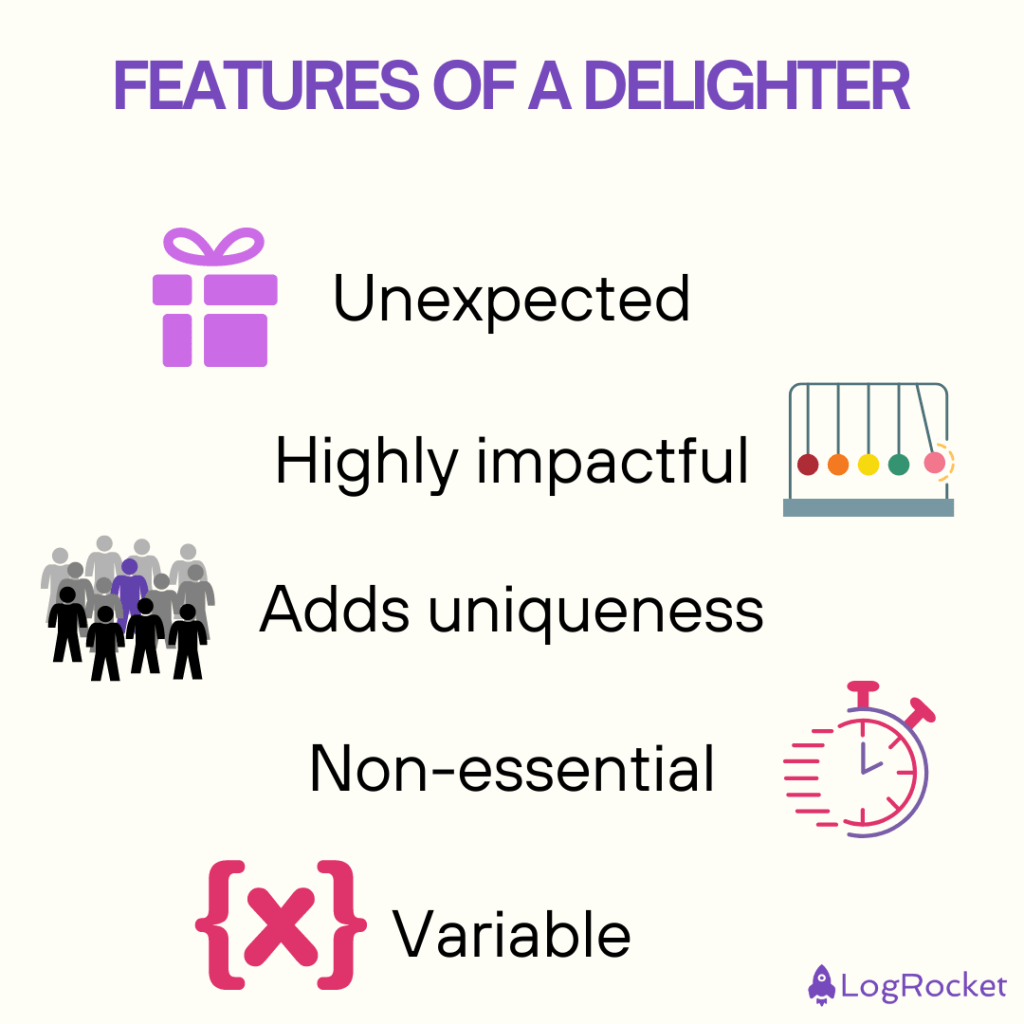
One of the main challenges in product management is prioritizing the most important and impactful changes to the product. You typically do that by estimating the business impact of a product and following a metric to determine whether you were successful.
But what happens when you stumble on an idea that would make the product or feature better but lacks an easily measurable business impact?
In this blog, I introduce you to the idea of adding a delighter feature to your next product. I’ll cover what a delighter is, share examples of a delighter feature, and explain the benefits it will bring you. The blog will also delineate two main ways you can add a delighter to your product.
Delighters in software product development are features or attributes that exceed customer expectations and provide unexpected pleasure or satisfaction. These elements are often surprises or gimmicks that improve user experience overall.
The key characteristics of a delighter include:

It is important to note the difference between a delighter and a satisfier. Unlike delighters, satisfiers are features or attributes that customers explicitly expect and desire in a product. For instance, the erase functionality in a graphic editor such as Paint is a satisfier.
If I were to use a food analogy, a satisfier would be your essential meal elements like protein and fiber. A delighter would be a small, tasteful dessert after the meal.
It’s apparent from the examples that delighters play a crucial role in enhancing the overall user experience. They can significantly impact customer loyalty and help differentiate a brand from competitors. I’ll detail these benefits of delighter features:
Delighters create a positive emotional response, making users feel valued, appreciated, or simply entertained (for example, a fun 404 page). This emotional connection can lead to increased engagement.
Delighted customers are more likely to stay with a product or service, reducing churn rates. They are also more likely to make repeat purchases or continue their subscription.
Delighted customers often share their positive experiences with others. So, they act as brand ambassadors and help attract new customers through personal recommendations.
Delighters can serve as a USP, setting a product apart from competitors by offering features that are not expected but highly appreciated. Highlighting such delighters during sales presentations or when a new product is being unraveled is especially important. Arguably, one could say that annual iPhone releases simply showcase new delighters.
Incorporating delighters can enhance a brand’s overall perception, making it appear more innovative and customer-focused. Again, Apple’s focus on privacy is a perfect example of that.
You can create memorable user experiences that foster loyalty and differentiate their products in the marketplace by focusing on delighters.
Choosing whether a certain update is a delighter is easy from a process point of view. When it comes to a traditional, developing product, delighters are usually features and functionalities that appear beneficial from the user’s perspective but are unlikely to improve any high-level business metrics.
But let’s face it — it is hard to dedicate development time to delighters for a developing product. The only real incentive to do it has to do with marketing, for example, adding AI features just to ride the hype wave or to match a competitor’s offer. Doing something “for the users” is unlikely to be a good enough motivator to win with business and growth goals.
For this scenario, a product manager has two ways of adding delighters to the product:
This means jumping to develop delighter features if there is some time left in the sprint or, for whatever reason, no major sprint goal is set. This would likely be fun if this “spare space” wasn’t also occupied by bug fixes and tech debt repayment initiatives.
So you need to go the extra mile to convince your development team to be on board the delighters train.
This is pretty hard as it’s hard to translate adding such features to an immediate increase in any metrics that businesses care for. It’s more likely to be a compound effect that will slowly reduce churn and improve the average product rating over time. Of course, a delighter can also become the heart and soul of the product, just like animations and gamification are for Duolingo.
So, it’s really about finding the right arguments and language to convince your stakeholders that working on delighters is the right way to go.
Things are a tad different when it comes to mature products that have all the core functionalities in place, are appreciated by the market, and, basically, each new release comes with new delighters. This means that your whole backlog is filled with them. And it’s up to you, the product manager, to find the right metrics that will allow you to prioritize your delighter backlog items. Even in this scenario, a business-oriented stakeholder might ask whether it is necessary to keep focusing on such development and perhaps move to another business opportunity.
Following what Apple is doing with its product lineup, I guess the best answer is — why not both? Apple releases a new iPhone model each year packed to the brim with new, different delighters, but they are also looking for new markets, such as the Vision Pro.
Delighters are difficult for the product manager to manage. On one hand, they can define the product’s characters and give it its unique spin and edge on the market. The battle of Apple vs. Android — although about the same basic product — shows how important it is to use delighters to win the client.
On the other hand, a typical product manager working on a developing product will have so much pressure to work on the satisfiers that it’s unlikely that any major delighters will ever make it to the sprint. So, whether they should is an individual assessment for different products.
I’ll leave you with this thought — smiling while using the product can keep the user using it, but you will never be able to measure it.
gd2md-html: xyzzy Wed Aug 14 2024

LogRocket identifies friction points in the user experience so you can make informed decisions about product and design changes that must happen to hit your goals.
With LogRocket, you can understand the scope of the issues affecting your product and prioritize the changes that need to be made. LogRocket simplifies workflows by allowing Engineering, Product, UX, and Design teams to work from the same data as you, eliminating any confusion about what needs to be done.
Get your teams on the same page — try LogRocket today.

Promotions depend on proof. This guide shows PMs how to capture wins, feedback, and impact before review season.

Most teams fail at autonomy. Learn how clear rules help product teams move faster without micromanagement.

A practical framework for PMs to use AI in ideation without sacrificing judgment, strategy, or decision quality.

A practical five minute revenue estimation method to help product managers compare ideas, drop low impact features, and prioritize smarter.